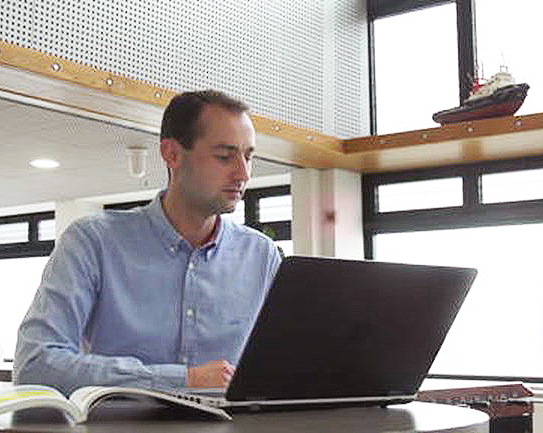Zero emissions in shipments
Meelunie research can steer shipping towards zero emissions
BY Meelunie 08/11/2021
Eye-opener
De Waaij’s research took Meelunie’s organic tapioca starch supply chain from Thailand to the US and made a cradle-to-gate assessment of the transportation of one 40-foot container. The supply chain involves multiple partners, over whose internal processes Meelunie has limited influence. But the research does mean we now have a better overview of the emissions per supply chain activity.
The real eye-opener was that over half of all supply chain CO2 emissions occur in creating the finished product, with the cultivation of cassava roots accounting for 37% and production of tapioca starch 36%. We had previously assumed that seaborne transportation was the largest source of emissions.



Better performance in 5 steps
De Waaij recommends five steps to improve the supply chain’s sustainability performance: measuring, developing, reducing, compensating and communicating. Meelunie has translated this into the following commitments:
- Measuring: Our sustainability performance is already measured by continuously calculating CO2 emissions in shipments. We will investigate ways to expand this to calculate the emissions for the entire supply chain, using our CO2e calculator to also calculate emissions from intermodal transportation.
- Developing: We develop CO2 strategies, set goals and create roadmaps to turn our ambition into plans
- Reducing: We will investigate what steps we can take to reduce these emissions. Given that most are emitted by Meelunie’s supply chain partners, we will need to enter a dialogue with them on how we can work together to identify CO2-reducing projects at farm and factory level.
- Compensating: We will discuss with our partners FairClimateFund and GoodShipping how we can compensate CO2 emissions through current and/or new insetting and offsetting projects. Ideally, we would like to set up a project involving our supply chain partners and customers.
- Communicating: To raise awareness of the emissions produced in Meelunie’s supply chain, and inspire our supply chain partners to join us in reducing and compensating them, we will be sharing the results of our CO2 emissions monitoring through our communication channels.

Coordination of CO2 activities
Once these five steps have been achieved, we plan to apply them to other supply chains. In the short term, our focus is on fine-tuning our CO2e calculator, so we can calculate not only emissions from deep-sea shipping movements but also our pre- and on-carriage by truck, train and barge globally. The increased accuracy of our measurements will also help us identify how best we can reduce and compensate those emissions.
Working as our sustainability manager, Jeroen de Waaij will be leading this work and developing a CO2 strategy for the coming years, as part of Meelunie’s efforts to stay a frontrunner in our industry when it comes to sustainability.
